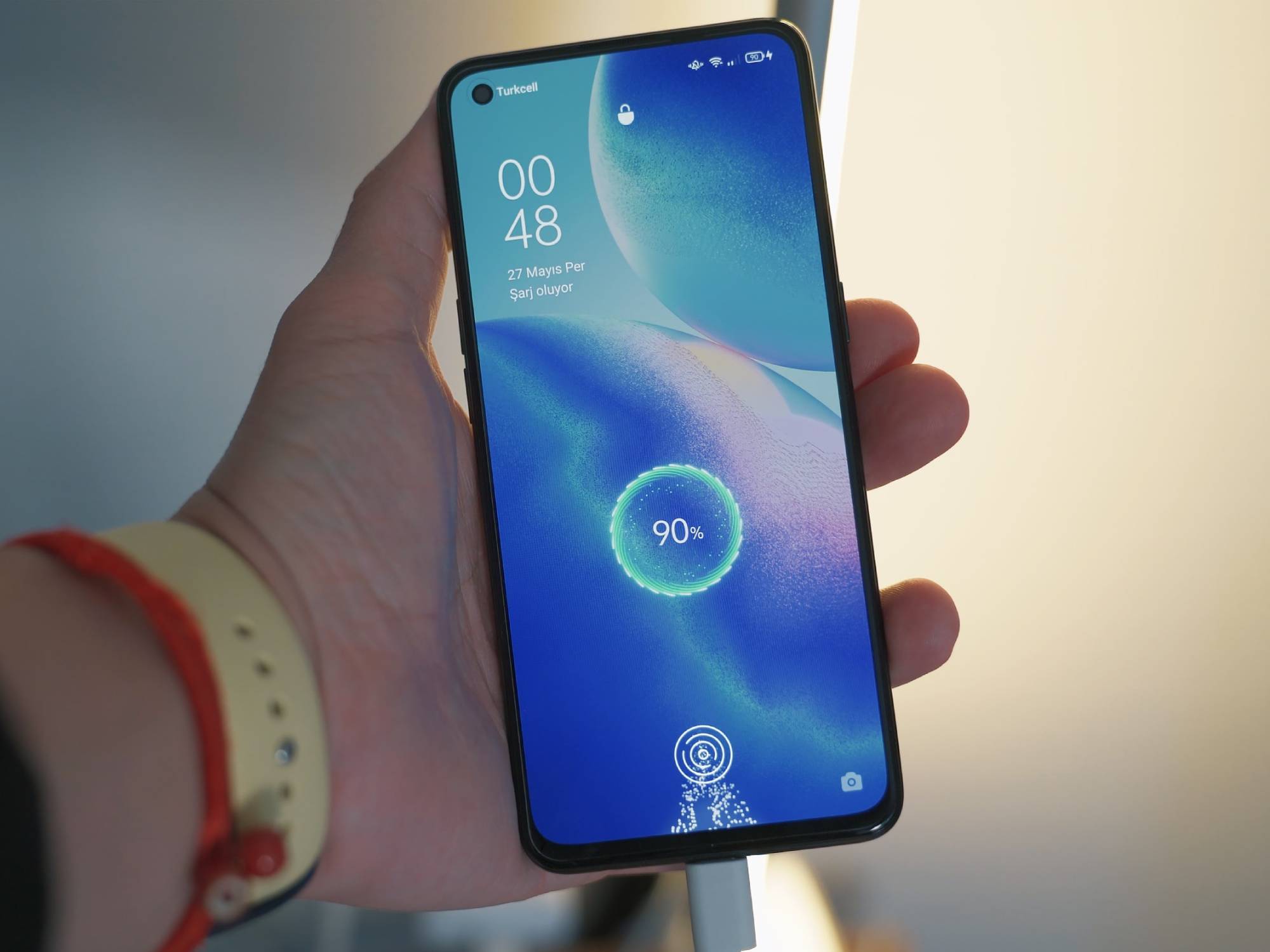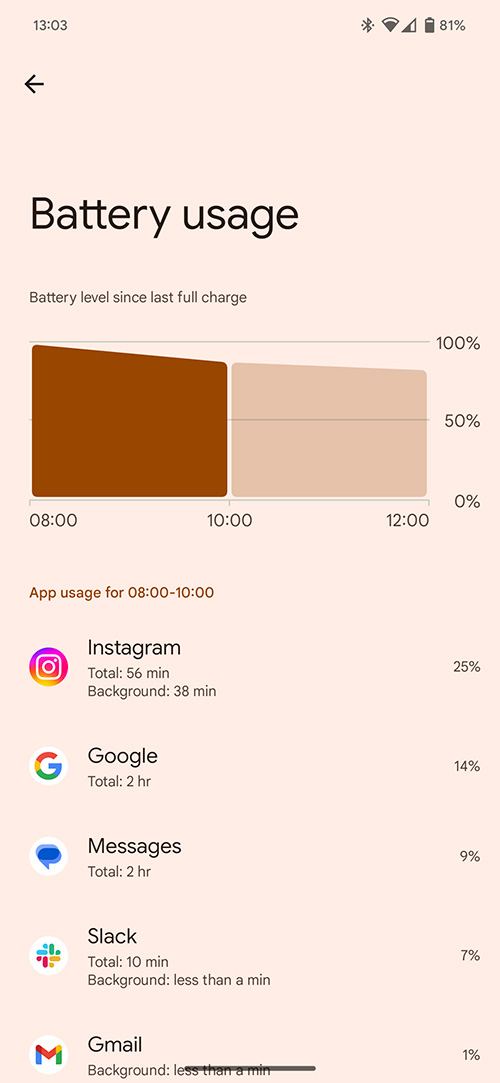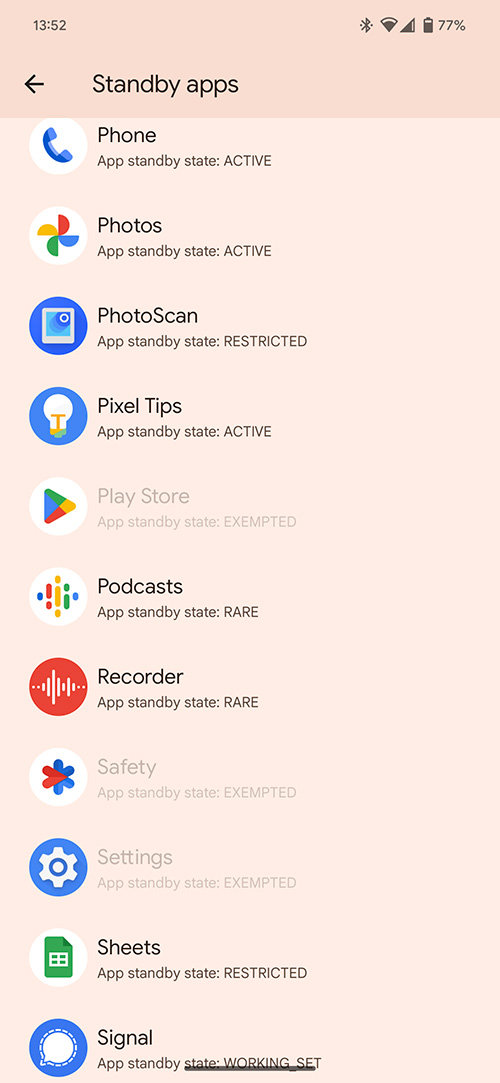

Keeping your Android phone’s battery alive is a constant battle. To thwart misbehaving apps and excessive drain, Google has added a number of energy-saving features to its mobile operating system over the years. Your options go beyond Battery Saver, too, so you can tweak settings to fit your needs.
Android’s Battery Saver stretches your charge when you need it most
Back in 2014, Google introduced a feature called Battery Saver to eke a bit more life out of your phone when it’s almost drained. When you enable Battery Saver mode, Android throttles your phone’s performance, limits background data usage, and reduces things like vibration in order to conserve juice. What exactly happens when you activate Battery Saver will depend on the make of your phone. For example, Pixel 3 phones and newer will automatically turn on Dark Theme, stop animations and apps from running in the background, and disable location services when the screen is off. It’s not ideal, but it’s better than your phone being completely dead.
You can turn on Battery Saver mode at any time. Just head to Settings, Battery, and then Battery Saver. Once there, tap Use Battery Saver to enable it.
You’ll also see an option to have this mode turn on automatically. That way, whenever you start feeling uncomfortable with the juice left on your device, Android will attempt to stretch the battery as long as it can go before that final shutdown.

To set it up, go to Battery Saver and tap on Set a schedule. There, you’ll have two options: choose Based on your routine to allow Android to turn it on automatically if your device decides it’s likely to die before your usual charge. You can also choose Based on percentage, and use the slider to determine how much charge you want your battery to reach (from 5 to 75 percent) before Android turns on Battery Saver.
If you frequently rely on this mode, add a shortcut to the Quick Settings panel, which you’ll see when you open the notification drawer (swipe down from the top of the screen with one finger) or fully display the menu (swipe down from the top of the screen with two fingers). For easy access to Battery Saver, tap the edit pencil in the bottom left corner of the Quick Settings menu, then hold and drag the Battery Saver button into Quick Settings.
Doze eases your idle phone into a deeper sleep
Ever notice that some notifications seem to come through at the exact moment you turn on the screen? That’s a result of Doze, a battery-saving feature that puts your phone into a super-deep sleep when it’s idle. Keep in mind that because it runs automatically in the background, the official name of this feature is only relevant to developers—you won’t find any explicit reference to it in your phone’s Settings menu.
[Related: 24 hidden Android settings you should know about]
When your screen has been off for a while, your phone begins dozing. Doze mode, according to Google, shuts off network access and defers any syncs. Instead, it waits for occasional “maintenance windows,” when the phone wakes up briefly, to run those jobs. That means you’ll still get notifications, but they may be a bit delayed, since they’ll only come in during those times. So-called “high priority” notifications like text messages and phone calls will still come through right away, but emails, Facebook messages, and other less immediate notifications may lag.
If the screen is off and your phone is completely idle—that is, sitting on a table instead of moving around in your pocket—it’ll enter an even deeper Doze state. In this mode, Android disables certain types of alarms, GPS, WiFi scans, and “wakelocks”—which keep your phone active when the screen is off—as well as cutting off network access and spreading out those maintenance windows even more. This super-deep Doze mode is particularly effective at saving battery, as you can see in the graph below.

When you turn on your screen, your phone automatically exits Doze mode. That’s why you’ll occasionally see notifications arrive just as you unlock your phone—those messages came in between maintenance windows, and waking your phone up allowed them to pop up.
Android activates Doze by default, and there’s no way to turn it off completely. You can, however, exempt certain apps from Doze mode if you want them to run in the background at all times. That said, I wouldn’t recommend you do this, since it will drain your battery faster. If you still want to exempt a few apps, head to Settings, Battery, and tap Battery Usage.
To see a list of apps ranked by how much battery they’ve used since the last full charge, go to Apps, scroll down, and tap App battery usage. You’ll see an alphabetical list of the programs installed on your phone, but you can sort them to see which ones are exempt from Doze. Tap the dropdown menu right above the list, and choose Unrestricted.
If you want to change the battery conditions for a specific app, tap its name and change its settings to Optimized (meaning the app will work under the Doze protocol) or Restricted (meaning the system will always reduce the app’s battery usage while it’s in the background). Choosing the latter will save you the most juice, but it can interfere with the proper functioning of the app in question. You’ll find that this list also contains many core pieces of Android. Those apps need to run at all times, and you won’t be able to change their battery usage even if you want to—any option other than Unrestricted will be blurred.
The real tip, though, is to take advantage of Doze as much as you can. If you’re sitting at your desk and not using your phone, put the device face-down on the table to turn off the active display. That will encourage it to enter deep Doze mode, which can really help stretch your battery.
App Standby puts rarely used apps to sleep
Ever download an app, install it, and then forget about it for a month? App Standby keeps those apps from running in the background and draining your battery. If you don’t use an app for a few days—and if it hasn’t sent you any notifications—it’ll enter App Standby, where it’s no longer allowed to run in the background or access the internet until you open it again. If you don’t, it will only run briefly once a day or so, when your device is plugged in, before re-entering standby mode.
You can exempt apps from App Standby the same way you do Doze: Just turn off Battery Optimization for that app by setting it to Unrestricted. If you’re curious about which apps are currently in Standby mode, though, you can check via Android’s Developer Options. Just be careful, as these options were not meant for users to tinker with.
To do so, head to Settings, About Phone, and tap the Build Number seven times. Your phone will ask you for your lock pattern or biometrics, and once you comply, it’ll tell you that you are now a developer. This will allow you to access the Developer Options menu under Advanced in System.

Head into that menu and scroll down to Standby Apps—the list is long, so you might want to search for it by using the search icon in the top right corner of your screen. It’ll pop up almost immediately. Tap that option, and you’ll see a list of apps on your system. The ones marked NEVER are currently in App Standby mode.
[Related: How to efficiently charge your devices]
As a more productive activity, though, try checking out the ACTIVE apps. If an app is active even though you haven’t used it in weeks, it might be worth asking why. Perhaps you need to turn off notifications for that program, or maybe it just deserves to be uninstalled.
And Android makes that easy for you: it’ll automatically list the apps you haven’t opened in a while and give you a shortcut to remove them once and for all. From the main Settings menu, go to Apps, then Unused apps—the tools you see there have not been active in the last six months, and you can obliterate them by tapping the trash can icon to the right.
Adaptive Battery learns your usage patterns
In 2018, with the launch of Android Pie, Google added yet another battery-saving feature—this time with more machine learning. Adaptive Battery learns which apps you use and when, and based on this information, it restricts the apps it doesn’t expect you to open anytime soon.
Much like the other features in this guide, you don’t have to do anything for Adaptive Battery to work—it’ll just do its job in the background and comes enabled by default. You can, however, turn it off from Settings > Battery > Adaptive Preferences.
This story has been updated. It was originally published on June 2, 2018.
